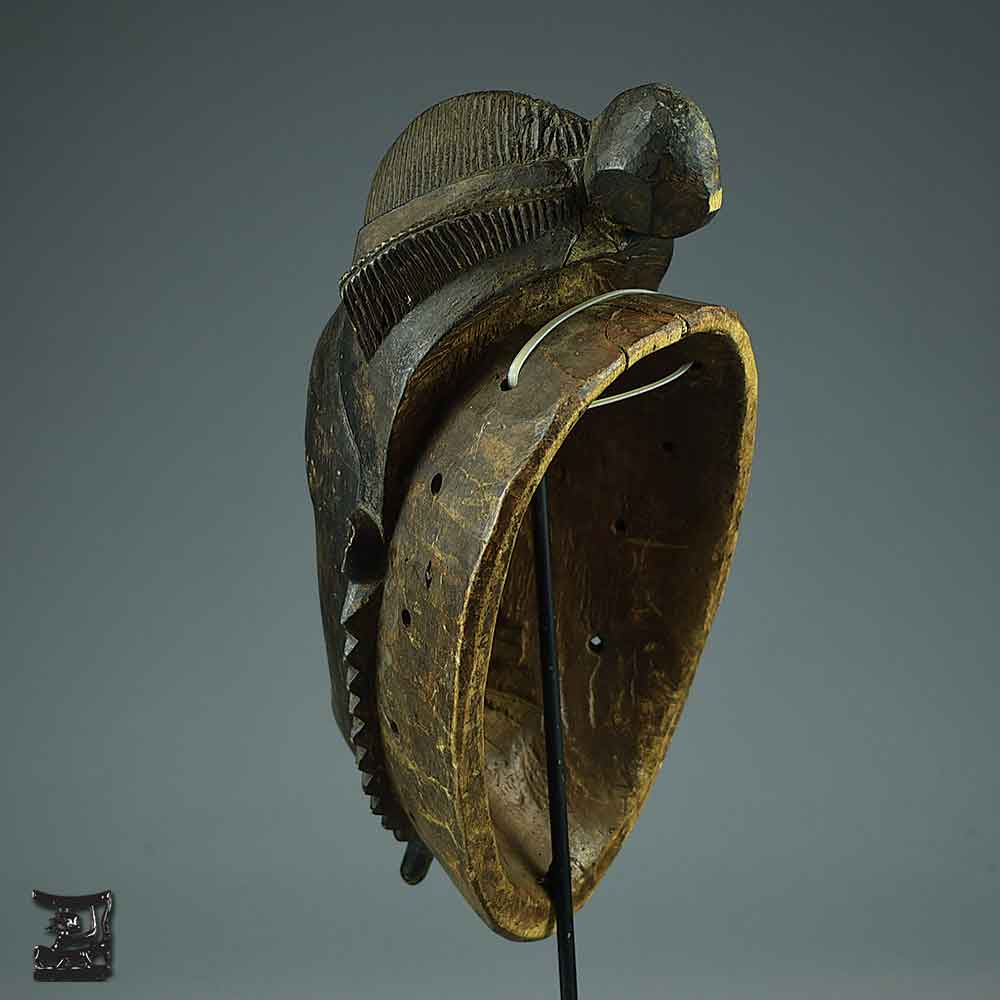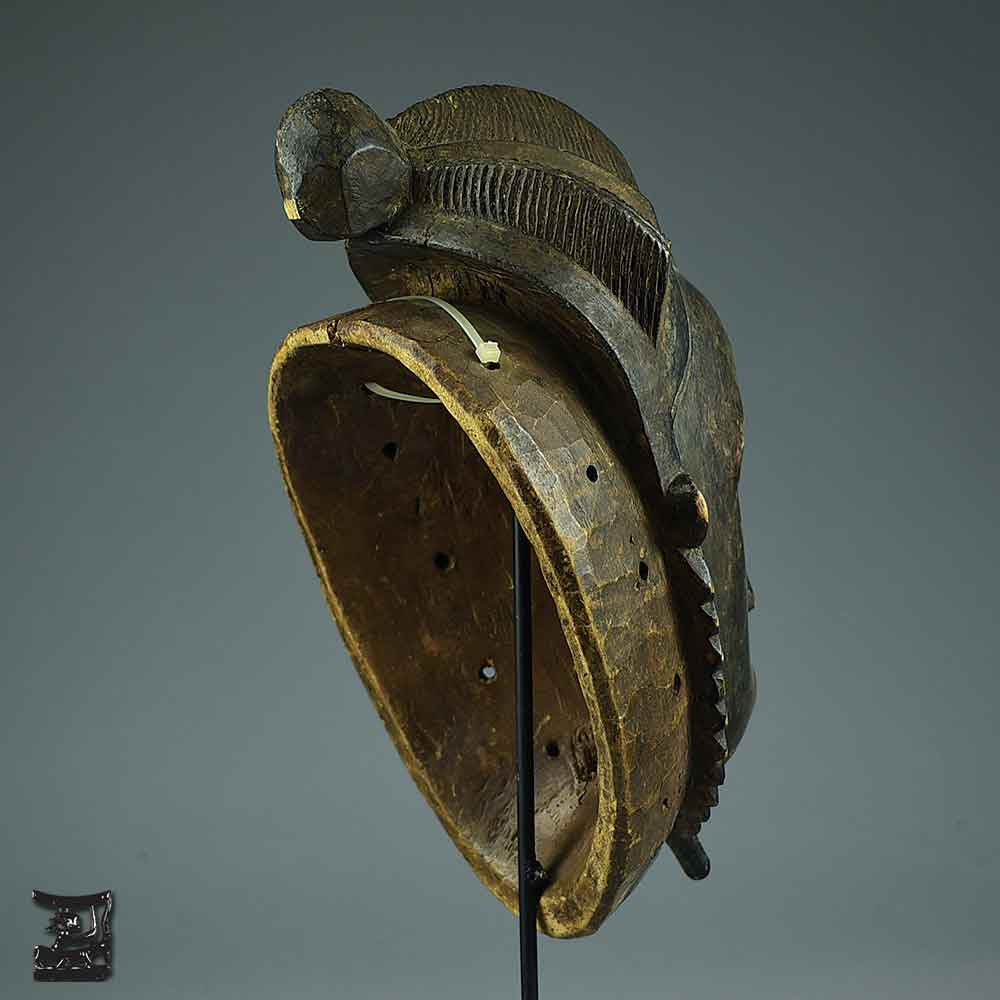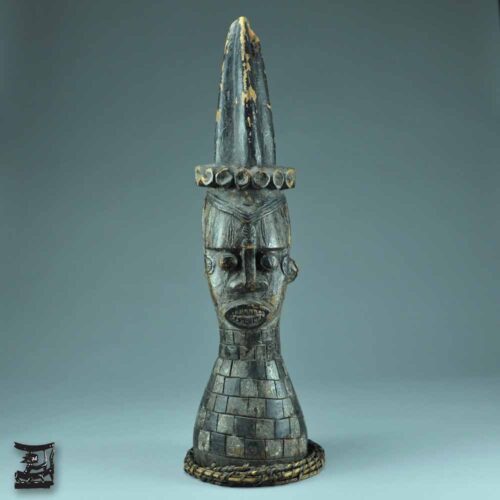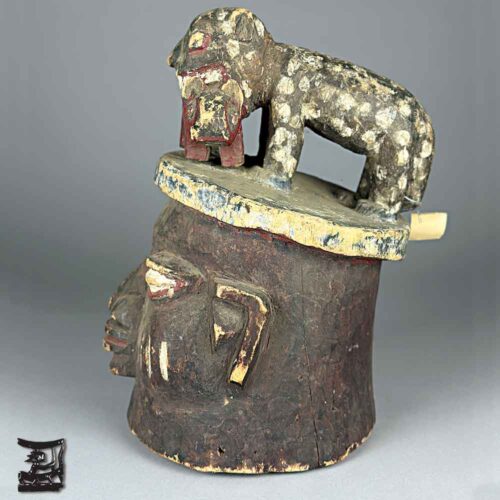Details

ITEM NAME:
Baule Kpwan Mask
ITEM #:
55029
ETHNICITY:
Baule
ORIGIN:
Cote D’Ivoire
MEDIUM:
Wood.
DIMENSIONS:
17″ Tall (43.2 cm)
CONDITION:
Very Good.

PROVENANCE:
Jean Pierre Hallet Estate Collection – Florida, USA.

CATALOGUE NOTE:
The Baule Kpwan Mask, an anthropomorphic effigy with striking geometric and animal features, portrays a face that blurs gender lines. Adorned with a goatee beard suggesting hermaphroditic traits, this mask stands uniquely in stark contrast to traditional Baule masks like the glin and kplekple.
Worn at an angle with a bit grasped between the teeth, the Kpwan exudes noble serenity through contemplative facial features and refined symmetry. Its design marries fantasy and precision, shunning mere geometric outlines for anatomical details that evoke tranquility and balance. The oval-shaped mask, meticulously crafted with flowing lines and intricate hair details, emanates a timeless sense of stillness and grace.
Echoing the face of Baule statuettes, the Kpwan is often embellished with jewels and hair styled in a traditional pageboy coiffure. Eschewing dramatic emotions, this mask radiates composure as a symbol of inner peace amidst worldly chaos.
The masquerader wears costume worn (to accompany the Baule Kpwan mask) which consists of dry fibers hanging down to the waist, with additional fibers attached to the hips and arms reaching down to the feet and wrists. The dancer does not have the accompanying sounds of a buffalo horn but is instead surrounded by goli toa, the sounds of large calabashes covered with a net adorned with numerous jangling cowries.
The masquerader who is chosen must be highly skilled and possess a tall, slim physique suitable for wearing the mask. Their back is draped with leopard skin (kangali), which symbolizes power and prestige in Baule culture, and thus holds more significance than the antelope, which was its natural prey, and is used on other masks.












